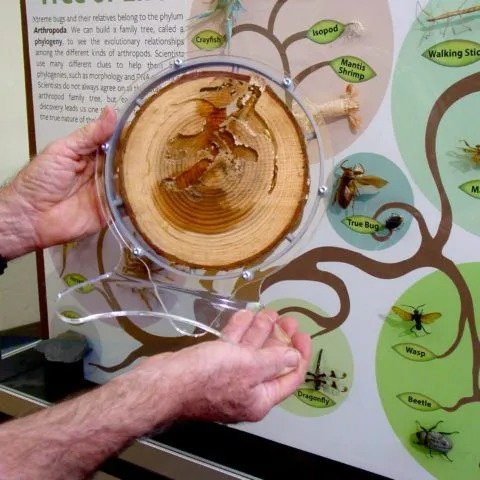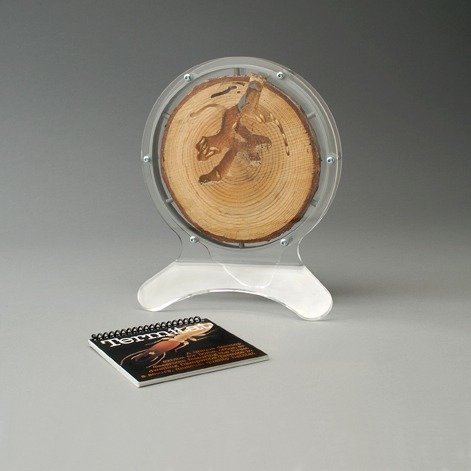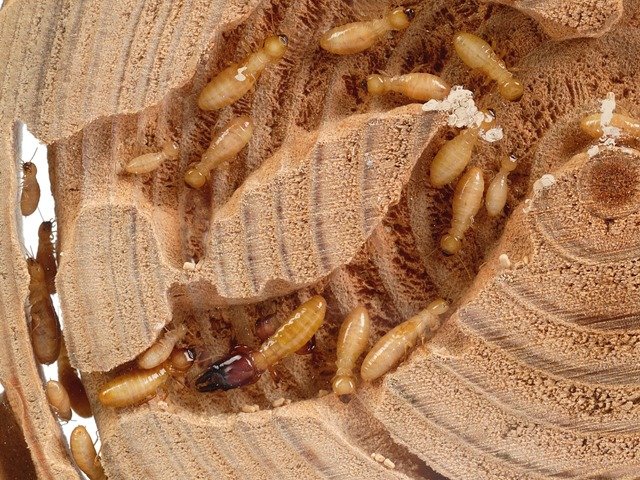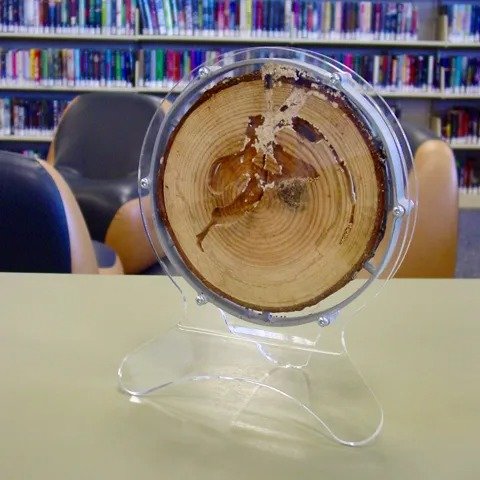The Termitat, a Tabletop Termite Habitat
The "pests" serve an important ecological function
I live out in nature, and for the sake of ecological balance I don't want to kill anything, which gets complicated.
Two snakes live outside my house. I don't like snakes, but I leave them alone because they're the reason I don't have rodents. Wasps have built a nest at my hose bib. I leave it undisturbed because the wasps eat the pests that plague the crops in my garden. Just yesterday, I discovered a termite colony is slowly destroying the rafters in one of my outbuildings. I haven't yet figured out a non-genocidal solution for that one.
While I was researching the termite problem, I came across the work of California-based designer Christopher Poehlmann, who designs and builds interactive museum exhibits. (Not to be confused with Philadelphia-based Christopher Poehlmann, a lighting designer.)

Poehlmann has designed something I initially thought was crazy: The Termitat, a desktop habitat for termites.

Made of ¼"-thick acrylic, it safely seals the termites inside, where they spend up to two years munching on the log slice inside. Once they've gone through it all, you can ship it back to Poehlmann, and he can reload it with a new slice (and a new colony, if necessary).

The question, especially from any homeowner that's dealt with termites, might be "Why the heck do you want to display these things?" In an interview with Pest Management Professional, Poehlmann explains the ecological value these bugs bring:
"Often ignored due to their unfortunate misrepresentation as 'just a pest,' these complex and evolved insects are incredibly fascinating to observe and have important lessons to teach us. Termites and humans are both highly social species, but unlike us, termites have remained in balance with the Earth's complex ecosystems.
"Besides being just fascinating to watch, they have many lessons to pass on. As scientists, architects and even robotics engineers study these amazing creatures, they are discovering how sophisticated termite adaptations are and the instrumental part these insects play in Earth's ecology. Termites are the 200-million-year-old master recyclers of the Earth's carbon who also share a social behavior system similar to ours."

By breaking down dead trees, the termites return carbon and nutrients to the soil, enhancing soil fertility and creating favorable conditions for both plants and beneficial microbes. I love that they do this—I just don't want them doing it to my structures. But ultimately, I am the invasive species on this land, not the termites. They were here before me and will be here after I'm gone. I've contacted a holistic pest control service and I'll see what I can learn.

And for those of you who think it'd be crazy to bring a pest habitat into your house, Poehlmann points out:
"The Termitat's tightly fitting case design uses 0.25-inch-thick acrylic, a plastic injection molded ring and security screws. It has yet to be broken open in normal use. Anyway, a small colony group released--most likely traumatically--in a non-forest location would not be able to establish themselves individually or as a group. Any individual termites on their own and away from their colony would perish.
"Plus, if your house has the same conditions as a damp, decaying forest log, you have other more serious problems to deal with."

--thanks emily!
-
oFavorite This
-
QComment
K
{Welcome
Create a Core77 Account
Already have an account? Sign In
By creating a Core77 account you confirm that you accept the Terms of Use
K
Reset Password
Please enter your email and we will send an email to reset your password.

